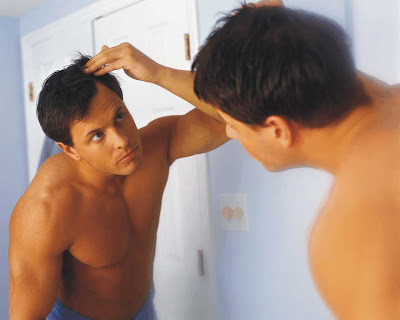 |
| Treatment of hair loss |
Effective treatment of hair loss requires to determine the cause.
• The telogen effluvium may indicate support of deficiency (iron, vitamin B12) or a thyroid problem, but they often heal without treatment after 3-4 months (after pregnancy, fever, surgery ...). The telogen effluvium induced by drug intake (isotretinoin, cholesterol, anticoagulant ...) require whenever possible replacement therapy with another molecule.
• The anagen effluvium chemotherapy may, to some extent, be minimized by preventive measures (cooling helmet).
• Skin diseases and systemic conditions that cause a drop in specific hair must receive treatment tailored to each case. Ringworm antifungal requires systemic therapy. Treatment of lichen uses topical steroids, intralesional or systemic and sometimes with antimalarials (Plaquenil). The scarring alopecia are delicate treatment, they require the use of an expert scalp. Once the process is stabilized by a reconstruction hair transplant is sometimes possible.
• Congenital alopecia can sometimes benefit from hair restoration hair transplants or hair supplements.
treatment of hair loss
• Alopecia areata in small plates often heals quickly without treatment, but may recur as the most important alopecia involve a rapid treatment that uses local corticosteroid (lotion), intralesional (injections into the scalp) or rarely the corticosteroids. PUVA, the dioxyanthranol and application of a sensitizing (diphencyprone) substance are treatments often recommended.
• Androgenic alopecia male benefits of treatment with finasteride (Propecia ®) and minoxidil 5%, dutasteride showed its superiority over Finasteride a large U.S. study, it has not yet authorized release on market for this indication. When the hair has gone from an area, hair transplants are the only way to find a natural hair. Current techniques for follicular grafts give excellent results when performed by expert teams.
• The female androgenic alopecia is common, treatment is called minoxidil 2% or 5 and antiandrogens (cyproterone acetate, spironolactone) when hyperandrogenism is manifest; Finasteride or Dutasteride are currently not included, but the Finasteride is being evaluated in postmenopausal women.
treatment of hair loss

No comments:
Post a Comment